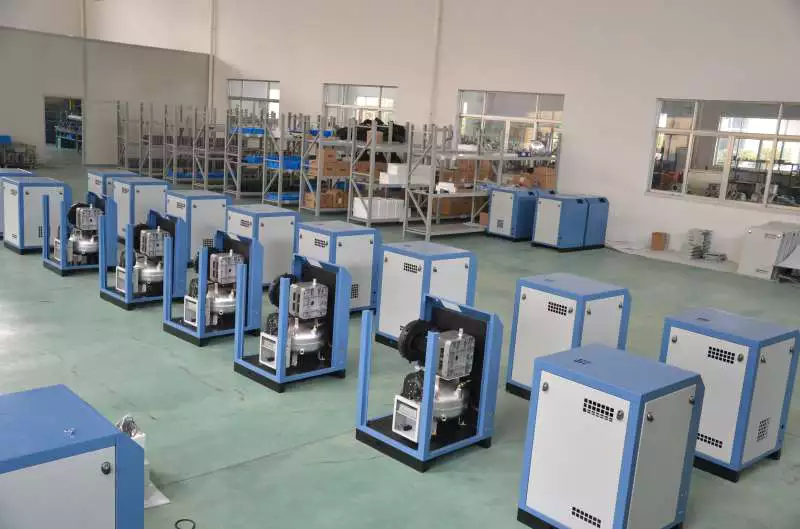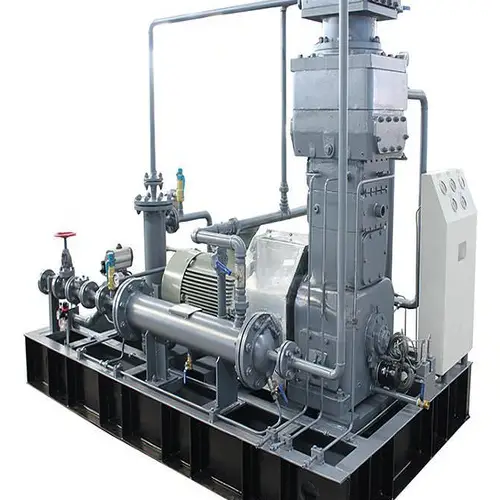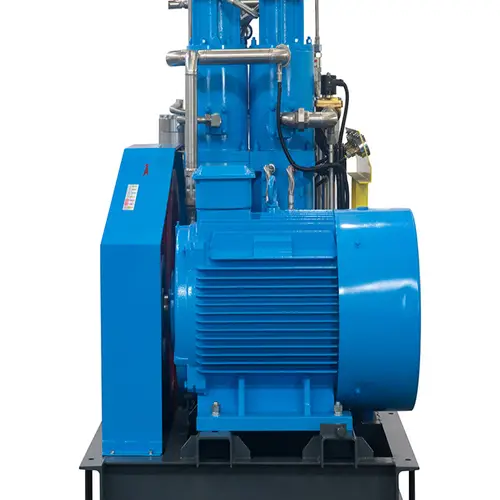 “`html
“`html
Revolutionary Refrigeration Compressor Units for Cold Storage
Explore the cutting-edge technology behind our refrigeration compressor units, specifically designed for cold storage applications. These robust systems, featuring advanced engineering and patented innovations, guarantee superior performance, energy efficiency, and reliability in various industrial environments.
Product Overview
Our refrigeration compressor units are meticulously engineered to offer unparalleled efficiency and operational excellence. Key features include:
- Enhanced energy efficiency; the coefficient of performance (COP) is boosted by approximately 8%.
- Proprietary rotor technology ensures seamless operation with minimal noise disruption.
- State-of-the-art capacity control mechanisms enable precise and adaptable performance.
- Innovative design elements significantly reduce operational noise and vibration.
- Precise circulation oil control enhances reliability and longevity.
- High-efficiency heat exchange tubes maximize thermal transfer.
- Robust reliability and stability for long-term use.
- Compatible refrigerants include Ammonia (R717), R404A, R507A, R22, R134A, among others.
Technical Specifications
| Refrigerant | R717 | R22 |
| Discharge Pressure (MPa) | Below 1.67 | Below 1.67 |
| Corresponding Saturated Temperature (°C) | Below 45 | Below 46 |
| Suction Pressure (MPa) | -0.045 to 0.57 | -0.017 to 0.62 |
| Corresponding Evaporative Temperature (°C) | -45 to 12.5 | -45 to 12.5 |
| Oil Pressure (MPa) | 0.1-0.3 higher than discharge pressure | |
| Oil Temperature (°C) | 30-65 | |
| Cooling Water Inlet Temperature (°C) | 15.5-33 | |
| Cooling Water Flow Deviation | ±10% | |
Applications of Screw Refrigeration Compressors
Screw refrigeration compressor units are pivotal in various applications such as food preservation, process cooling, gas liquefaction, and scientific exploration. Their ability to operate efficiently in low-temperature environments makes them ideal for a multitude of industries, including but not limited to:
- Food freezing and refrigeration
- Building aggregate cooling
- Sports venues
- Mining operations
Explore Our Diverse Product Range
In addition to refrigeration compressor units, our company offers a wide variety of industrial products tailored to meet the needs of diverse sectors. Our product offerings include:
- Agricultural gearboxes
- Power output shafts
- Sprockets
- Hydraulic couplings
- Worm gear reducers
- Racks
- Roller chains
- Pulleys
- Planetary gearboxes
- Timing pulleys
- Bushings
Our commitment to high-quality products, competitive pricing, and exceptional customer service ensures that we are a reliable partner for your industrial needs. We welcome customization requests based on your drawings and samples.

Frequently Asked Questions
1. What advantages do your refrigeration compressor units offer?
Our units provide high energy efficiency, low noise operation, and advanced capacity control, ensuring optimal performance and reliability.
2. How do I know your products are reliable?
We prioritize integrity and customer satisfaction, offering trade assurances to guarantee your order and financial investment.
3. Is there a warranty for your refrigeration compressor units?
Yes, we offer a 100% satisfaction guarantee on all products, ensuring you receive quality equipment and support.
4. Can I visit your facilities to see the products?
Absolutely! We welcome you to visit our factory anytime to see our manufacturing processes and product range firsthand.
5. What is the typical delivery timeframe for your orders?
Delivery is generally within 15-35 days after confirming your specific requirements.
“`
Performance Characteristics of CO₂ Compressors
CO₂ compressors are pivotal in various industrial applications due to their unique performance characteristics. Below are the key attributes:
- High Efficiency: CO₂ compressors are designed to operate efficiently across a wide range of pressures and temperatures. The thermodynamic properties of CO₂ enable compressors to achieve a high coefficient of performance (COP), making them energy-efficient in both refrigeration and air conditioning systems.
- Environmentally Friendly: As CO₂ is a natural refrigerant, it has a low global warming potential (GWP) compared to traditional refrigerants like HFCs. This characteristic makes CO₂ compressors a sustainable choice, aligning with global efforts to reduce environmental impact.
- Robust Performance: These compressors are built to withstand high operating pressures, which are essential for applications involving supercritical CO₂. This robustness enhances reliability and extends the lifespan of the equipment.
- Versatility: CO₂ compressors are adaptable to various applications, from refrigeration systems to supercritical extraction processes. Their ability to function efficiently in diverse environments makes them invaluable in numerous sectors.
- Safety Features: Many CO₂ compressors come equipped with advanced safety mechanisms, including pressure relief valves and automatic shutdown features. These elements are vital in preventing accidents and ensuring safe operation.
Types and Characteristics of CO₂ Compressors
CO₂ compressors can be categorized based on their design and operational principles. The primary types include:
- Reciprocating Compressors: Characterized by their use of pistons, these compressors are popular for their high efficiency and ability to handle varying loads. They are ideal for both low and medium-temperature applications.
- Scroll Compressors: These compressors utilize two spiral elements to compress the gas. They are known for their quiet operation and compact design, making them suitable for residential and light commercial applications.
- Rotary Compressors: Utilizing rotating mechanisms, rotary compressors excel in efficiency and reliability. They are particularly effective in high-capacity applications.
The materials used in manufacturing CO₂ compressors significantly influence their performance. For instance, compressors made from stainless steel offer corrosion resistance, enhancing durability in harsh environments. Aluminum compressors, while lightweight, provide excellent thermal conductivity and efficiency. Cast iron, on the other hand, is often used for its robustness and ability to withstand higher pressures.
Applications of CO₂ Compressors
CO₂ compressors are extensively utilized across various industries. Their applications include:
- Refrigeration and Air Conditioning: In this sector, CO₂ compressors are used in commercial refrigeration systems, supermarkets, and HVAC applications, contributing to energy savings and environmental sustainability.
- Food Industry: The food industry employs CO₂ compressors for freezing and preserving food products, ensuring quality while minimizing waste through efficient cooling processes.
- Supercritical CO₂ Extraction: This technology uses CO₂ in its supercritical state to extract essential oils and other compounds from plants, making it a preferred method in the natural product industry.
- Fire Suppression Systems: CO₂ compressors play a crucial role in fire suppression systems, where CO₂ is used to displace oxygen and suppress flames, making them an effective solution for fire control.
- Gas Industry: In gas processing and transportation, CO₂ compressors are essential for managing CO₂ emissions and enhancing the recovery of oil and gas.

Future Development Trends and Opportunities
The future of CO₂ compressors appears promising, with several trends emerging in the industry. One significant trend is the advancement in technology to enhance energy efficiency. As businesses increasingly focus on sustainability, the demand for energy-efficient compressors is likely to rise. Additionally, the integration of smart technologies, such as IoT and AI, is expected to optimize performance and maintenance, reducing downtime and operational costs.
Another opportunity lies in the growing market for natural refrigerants. With stricter environmental regulations on synthetic refrigerants, businesses are shifting towards CO₂ as a safer alternative. Companies that innovate and improve the performance of CO₂ compressors will find substantial growth potential in this evolving landscape.
Suggestions and Outlook
As the industry moves forward, manufacturers should focus on enhancing the efficiency and durability of CO₂ compressors. Research and development efforts should prioritize reducing the size of compressors while maintaining or improving their performance. Collaborations with environmental agencies can also promote the benefits of CO₂ as a refrigerant, further increasing its adoption across various sectors.
How to Choose a Suitable CO₂ Compressor
Selecting the right CO₂ compressor involves evaluating several critical factors:
- Application Requirements: Understand the specific needs of your application, whether it’s refrigeration, extraction, or another use.
- Flow Rate and Capacity: Assess the required flow rate and capacity to ensure the compressor can handle the demand without overburdening.
- Operating Pressure: Check the compressor’s operating pressure capabilities to match your system’s requirements.
- Temperature Range: Ensure the compressor can operate efficiently within the temperature ranges needed for your application.
- Energy Efficiency: Look for compressors with high energy efficiency ratings to reduce operational costs.
- Regulatory Compliance: Ensure the compressor meets relevant environmental regulations and standards.
Summary
In conclusion, CO₂ compressors play a vital role in various industries due to their efficiency, environmental benefits, and versatility. With ongoing advancements and increasing demand for sustainable solutions, the future looks bright for CO₂ compressor technologies. Choosing the right compressor involves careful consideration of application requirements, capacity, and compliance, ensuring optimal performance in diverse applications.
All the content of the page is from the Internet, the content is only as a reference for product selection, our products are replacement parts and not original spare parts; we are not the holder of the original trademarks of the content, our products are only suitable for after-sales replacement parts and not original spare parts, our replacement parts can be perfectly adapted to the original spare parts; if you need to buy original spare parts, please contact the original factory to buy. If you want to buy original spare parts, please contact the original supplier for purchase.
Author: Dream
 “`html
“`html “`html
“`html “`html
“`html “`html
“`html
 “`html
“`html “`html
“`html
